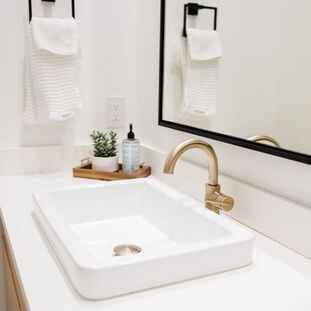 Your home's plumbing system is one of the most important systems in your home, but it can often be overlooked until something goes wrong. It’s important to have a basic understanding of how your plumbing system works and how to maintain it, so you know the proper steps to take. In this blog, we will cover everything you need to know about your home's plumbing system (and maybe stuff you didn’t want to know). We will cover how it works to common problems and how to fix them. For tips on how to fix plumbing issues, you can see the other topics in our blog. Let’s talk about how your home's plumbing system works: The plumbing system in your home is made up of a network of pipes and fixtures that deliver water to faucets, showers, toilets, and other appliances. The water then flows through the sewer lines and out of your home. Simple right? The plumbing system is divided into two main parts: the water supply system and the drainage system. The water supply system The water supply system delivers clean water to your home from the main water line. The water enters your home through the main shut-off valve, which is typically located near the front of your house. The water then flows through a series of pipes to the various fixtures in your home. The pressure of the water is controlled by the water pressure regulator, which is also typically located near the main shut-off valve. The drainage system The drainage system removes wastewater from your home and sends it to the sewer line. The wastewater flows through a series of pipes to the main drain line, which then exits your home and flows to the sewer line. The drainage system is equipped with traps, which prevent sewer gases from entering your home. Traps are also designed to catch debris, such as hair and soap scum, before it enters the sewer line. How can you maintain your home's plumbing system?
If you have any questions or need help with a plumbing emergency, we’re always here to help!
0 Comments
 It's hard to believe that it August is already here and we're preparing the kids to go back to school. Where does the time go? If back to school is a time of chaos for you and your family, here are a few tips that may help!
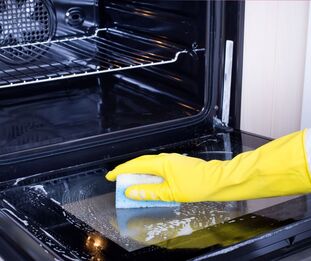 Everyone loves a helpful hack to make lives a little simpler, right? We've put together this fun list of things you may not have thought of to save you time, energy, and money:
 Are you moving this summer? Moving can be stressful and overwhelming, but it doesn't have to be. Here are some tips to help you make your move as smooth as possible:
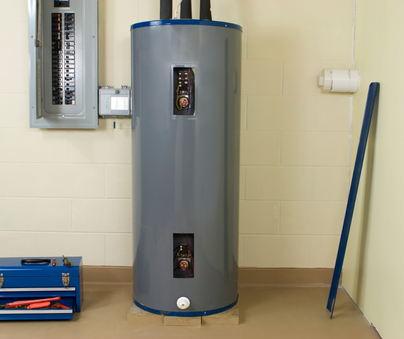 If you are in the market for a new water heater in the Twin Cities, here are some things to think about: 1. Consider the size of your household. The size of your water heater should be based on the number of people in your household and their water usage habits. A family of four will need a larger water heater than a single person. 2. Think about your energy efficiency needs. There are two types of water heaters: traditional storage tank heaters and tankless on-demand heaters. Storage tank heaters are less expensive to purchase, but they are less energy efficient. Tankless on-demand heaters are more expensive to purchase, but they are more energy efficient. 3. Choose the right fuel type. Water heaters can be powered by natural gas, propane, electricity, or oil. The type of fuel you choose will depend on your budget and the availability of fuel in your area. 4. Read the Energy Guide label. The Energy Guide label on water heaters provides information on the unit's energy efficiency and estimated annual operating cost. This information can help you compare different models and choose the most energy-efficient option for your home. 5. Get professional installation. Water heaters can be dangerous if they are not installed properly. It is important to hire a qualified plumber to install your new water heater. We’re happy to help get a new one installed. 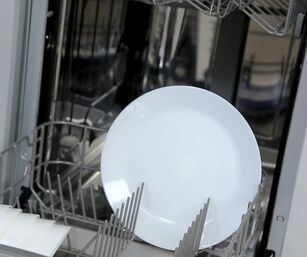 Have you ever been out of dishwasher liquid and wondered if maybe you could substitute in dish soap instead? Here are some things to consider that may dissuade you from making the substation:
Here are some additional tips for using your dishwasher:
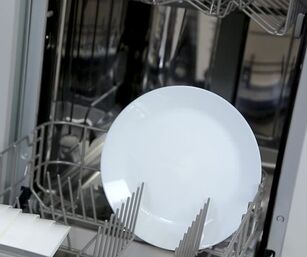 Are you used to handwashing things like sponges, brushes, and even your toothbrush holder? There may be a more effective and germ-killing option- Your dishwasher! The temperature reached by your dishwasher is much hotter than the water in your sink, so it naturally kills bacteria. Let’s be honest, you wouldn’t want your sink that hot, it could scald you. Not every home has a dishwasher, but if you do, here are 5 things you can put in the dishwasher to keep them clean. Be sure to look for the dishwasher safe symbol before you put it in the dishwasher. You don’t want to ruin the item or the appliance. Sponges: Did you know you can clean dirty sponges in the dishwasher? Kitchen sponges carry a lot of bacteria, so if yours hasn’t been washed in a while, think about putting them in the dishwasher (top shelf of course) on a regular basis. Washing your sponges once a week can really make a difference. Hats: We bet you didn’t know you could clean hats in the dishwasher! Washing them in the washing machine doesn’t work very well, but the top shelf of your dishwasher can. It helps clean out all the dirt, sweat, and grim while keeping shape. If the hat has a cardboard rim, we don’t recommend putting it in the dishwasher. Toothbrush Holders: The bottom of your toothbrush holder isn’t usually a pleasant sight…and usually full of grime. Place it face down on the top shelf of the dishwasher just like a regular cup and watch it get sparkly clean. Plastic Toys: Some of your kid’s plastic toys can even be washed in the dishwasher. Cleaning them with rags and chemicals can make them unsafe for your children, but popping them in the dishwasher can be a game changer. Put toys on the top rack to be safe and put smaller toys in a mesh bag to keep them from falling through. Shelving from the Refrigerator: It’s hard enough to clean the shelving from your fridge. Make life easier and put them in the dishwasher. Place them on the bottom shelf just like a place and watch them get clean! If you find that the shelves are too big, you can always take out the top shelf of the dishwasher to create more room. Of course, these are just a few things you wash in the dishwasher, but there are many others. We’d love to hear what’s worked for you! 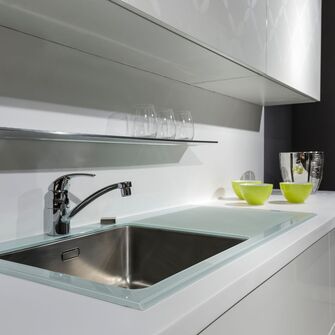 Have you noticed an unpleasant smell in your kitchen, but you can’t figure out where its coming from? Perhaps you’ve checked the refrigerator, taken out the trash (and cleaned the trash can), but the smell persists? It could be that your kitchen sink is to blame! The kitchen sink is one of the busiest places in the kitchen. You prep food, wash hands, clean dishes, use the garbage disposal, and so much more. With all the activity, gunk and grime can build up in the drain which can cause some of those nasty odors. What’s worse is that food and grease can stick to the pipes in your drain, which not only can start to rot, but can also cause clogs if you’re not careful. So, if you’ve determined that your kitchen sink is to blame for smell, here are some things you should investigate: Clean and Take Care of the Garbage Disposal If you have a garbage disposal, when was the last time you cleaned? If you’re wondering why we’re asking that question, we can pretty much assume you haven’t cleaned it. 😊 It’s also important to note what you are putting down the drain. We have some great blogs on maintenance for your garbage disposal and what not to put in there! Check them out. Check the Drain! Grease, food, and oil can all build up in the drain, so its important to check it form time to time, especially if you have a smell that won’t go away. You can clear the drain by pouring a cup of baking soda down the drain, followed by a cup of vinegar. We recommend letting it set for 10 minutes before flushing it with hot water. Of course, if it doesn't clear, we’re always here to help. Check The Trap Depending on the smell coming from the sink, it may be something trapped in, well, the trap! The P-trap is the curved section of the pipe underneath your sink. It prevents gases and odors from coming up through the drain. Whether the P-trap doesn’t have enough water to trap the odors, or it’s clogged, if the smell seems more like sewer than rotting food, you should check the P-trap. Clogged Vent If the P-trap or other problems aren’t to blame for the bad smell, it very well could be a clogged vent. When the vents connected from your sewer line to the outside become clogged or blocked, it can also cause a smell. Since vents are usually located on roof tops, its not impossible for these vents to become clogged with bird nests, leaves, or other debris. This one we recommend having a professional look at! If you aren’t sure where to get started or just don’t have time to deal with the problem, you know we’re here to help. Give us a call today. 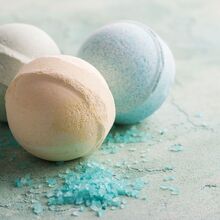 Are you a bath bomb user? Many people love using them to relieve stress or just have a sweet-smelling bath, but can it cause problems with your plumbing? That’s a great question. Depending on the ingredients of your bath bombs, you might be left dealing with a clogged drain in your bathtub. Luckily, Tony’s Plumbing and Heating is here to help! Check the Ingredients Most bath bombs are made with salts, oils, and scents to help create a relaxing, yet fragrant spa-like experience. They can contain Epsom salt or baking soda to help soothe your sore muscles, which both dissolve well in water. Some of the other ingredients like cornstarch, essential oils, cocoa butter, essential oils, and glitter. Glitter never goes down the drain well. In addition to that, some of the ingredients that don’t dissolve well in water can leave behind a residue in your tube, as well as cling to the walls of the pipes in your home. As time passes, these ingredients can build up and collect other things like hair and soap to cause clogs. Keeping Your Pipes Clear If you want to keep using bath bombs, we think that’s a great idea! Don’t give up a little “me time” because you might get a clogged pipe or drain over time. Here are a few simple steps to keep those clogs and pipes clear:
Pretty simple steps to keep enjoying your bath bombs whenever you need a little stress relief! Of course, if you do find yourself with a clogged drain that just won’t budge, we’re here to help. 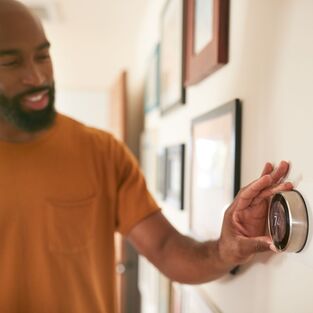 When the weather outside gets cold, we run the risk in the midwest of having our pipes freeze. In fact, burst pipes are one of the most common causes of property damage during cold weather and can cause thousands of dollars in damage. Pipes most at risk are those in unheated interior spaces like attics, basements, and garages, but other pipes can freeze as well. There is good new though! THere are simple things you can do to prevent those pipes from freezing and we're here to tell you about them: Keep Your Garage Door Closed! If you have water supply lines in the garage, keep your garage door closed when it's not in use. Open Up Kitchen and Bathroom Cabinet Doors. If you are worried about indoor pipes freezing, help the air in the home circulate by opening up your cabinet doors. This works well especially if your sinks share an exterior wall. If you have small children or pets in the home, be sure to remove objects or chemicals that may cause harm before doing so. Set Your Thermostat to the Same Temperature. Keeping your thermostat at a consistent temperature during the day and night can help save your pipes. During a cold spell, be sure to keep it consistent as well! Keep the Heat on if You Plan to Be Away. Planning a vacation during the winter months? Be sure to keep your heat on no lower than 55 degrees. Consider Adding Insulation for Long Term Results! If your worried about pipes freezing over the years, consider adding insulation to your basement, crawl space, or attic. You can also consider options to heat your garage. Of course, these aren't your only options for preventing your pipes from freezing, but we're confident this is a good place to start. If you have questions, don't hesitate to ask. |
AuthorAt Tony's Plumbing & Heating, we offer outstanding residential and commercial plumbing and heating services in the East Twin Cities metro. With our blog, we hope to bring you useful tips and tricks for ever day life! Archives
June 2024
Categories
All
|
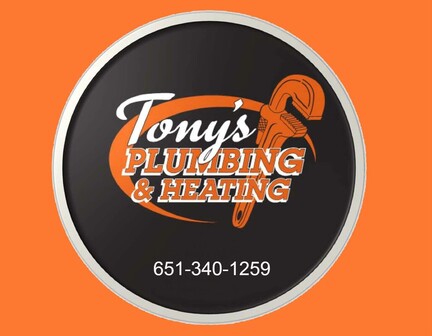
 RSS Feed
RSS Feed